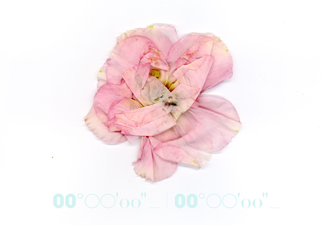Synthetic and Natural Raw Materials
During the first three months of school, we are learning the raw materials, or individual scent ingredients used to create a perfume. Three times a week we are taught synthetic raw materials and two times a week the natural raw materials. Every day we learn 5-15 new scents, with the expectation that by April, we will be able to recognize about 500 raw materials from memory.
Most of the natural raw materials would seem pretty familiar. The citrus family includes lemon, bergamot, sweet orange, and mandarin, amongst others. There’s a rose family and a jasmine family, woody and minty. But it’s funny how when you’re handed the essential oil of grapefruit on an unmarked paper blotter, your mind seems momentarily to go blank. Is this...orange?! No, wait...lime!!
Despite the entirely foreign sounding names, in some ways the synthetics are easier to define because they have fewer scent aspects. For example, the natural essential oil of vetiver, a plant native to india whose roots are distilled to create a complex woody, rich, almost smoky scent, contains 152 chemical constituents and attempts to reproduce it in a laboratory have been largely unsuccessful. On the other hand, geraniol is a synthetic ingredient with a simpler citrusy rose smell that is a chemical constituent of palmarosa, a grass native to india, and is used, along with other ingredients, to recreate the scent of a rose.
Is synthetic geraniol created in a laboratory, or is it extracted from the plant? If it is created in a laboratory, how? If synthetic ingredients originate in nature, can they still be considered synthetic? Are synthetic ingredients harmful to our health and/or the environment?
A couple of years ago i took a series of cooking classes at the Natural Gourmet school in Manhattan. I remember the founder, Anne-Marie Colbin, discussing vitamins. Her opinion was that taking a vitamin out it’s context, outside of the food from which it came from, whose system was created by nature to provide nourishment, depletes the vitamin’s ability to provide that nutrition. A recent study published in the New York Times seems to agree with this wisdom, citing that no health benefits were seen by regular multivitamin users. In contrast, research does show that people who eat nutrient-rich diets of whole foods experience better health.
If this is the case, I would conclude that using natural essentials oils and absolutes in a perfume intrinsically produces aromatherapeutic qualities, while synthetic raw materials have no psychological or physical effects. But, is there harm in using synthetic ingredients? I hope to find out, as I am learning about many fascinating synthetic raw materials that I look forward to experimenting with in formulation.
 February 18, 2009 at 6:52 |
February 18, 2009 at 6:52 |  Post a Comment
Post a Comment 















Reader Comments